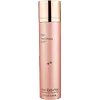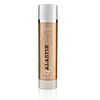What's inside
What's inside
 Key Ingredients
Key Ingredients

 Benefits
Benefits

 Concerns
Concerns

 Ingredients Side-by-side
Ingredients Side-by-side

Water
Skin ConditioningC13-15 Alkane
SolventPropanediol
SolventCaprylic/Capric Triglyceride
MaskingGlyceryl Stearate Citrate
EmollientLinoleic Acid
CleansingGlycerin
HumectantDimethicone
EmollientAlpha-Arbutin
AntioxidantArginine PCA
HumectantHydrolyzed Sodium Hyaluronate
Skin ConditioningBisabolol
MaskingCetearyl Alcohol
EmollientAcetyl Glycyl Beta-Alanine
Skin ConditioningHexylresorcinol
AntimicrobialTerminalia Ferdinandiana Fruit Extract
AntioxidantArtemisia Capillaris Flower Extract
Skin ConditioningDiglucosyl Gallic Acid
Pancratium Maritimum Extract
BleachingCeramide Ng
Skin ConditioningLinolenic Acid
CleansingBeta-Glucan
Skin ConditioningAlgin
MaskingTocopherol
AntioxidantButylene Glycol
HumectantEthylhexylglycerin
Skin ConditioningXanthan Gum
EmulsifyingCarbomer
Emulsion StabilisingSodium Phytate
Sodium Hydroxide
BufferingPhenoxyethanol
PreservativeBenzoic Acid
MaskingSorbic Acid
PreservativeCitric Acid
BufferingWater, C13-15 Alkane, Propanediol, Caprylic/Capric Triglyceride, Glyceryl Stearate Citrate, Linoleic Acid, Glycerin, Dimethicone, Alpha-Arbutin, Arginine PCA, Hydrolyzed Sodium Hyaluronate, Bisabolol, Cetearyl Alcohol, Acetyl Glycyl Beta-Alanine, Hexylresorcinol, Terminalia Ferdinandiana Fruit Extract, Artemisia Capillaris Flower Extract, Diglucosyl Gallic Acid, Pancratium Maritimum Extract, Ceramide Ng, Linolenic Acid, Beta-Glucan, Algin, Tocopherol, Butylene Glycol, Ethylhexylglycerin, Xanthan Gum, Carbomer, Sodium Phytate, Sodium Hydroxide, Phenoxyethanol, Benzoic Acid, Sorbic Acid, Citric Acid
Water
Skin ConditioningSqualane
EmollientGlycerin
HumectantNiacinamide
SmoothingSodium Acrylates Copolymer
Thermus Thermophillus Ferment
Skin ConditioningTranexamic Acid
AstringentGlucosyl Hesperidin
HumectantSilybum Marianum Extract
Skin ConditioningWithania Somnifera Root Extract
Skin ConditioningLactoferrin
Skin ConditioningPlankton Extract
Skin ConditioningTremella Fuciformis Sporocarp Extract
AntioxidantPancratium Maritimum Extract
BleachingDunaliella Salina Extract
Skin ConditioningPentasodium Tetracarboxymethyl Acetylhydroxyprolyl Dipeptide-12
Skin ConditioningHexapeptide-11
Skin ConditioningHexapeptide-12
Skin ConditioningPentasodium Tetracarboxymethyl Dipeptide-51
Skin ConditioningPhosphatidylserine
Emulsion StabilisingDiglucosyl Gallic Acid
Phospholipids
Skin ConditioningFructose
HumectantBetaine
HumectantAscorbyl Palmitate
AntioxidantPropanediol
SolventLecithin
EmollientCaprylyl Methicone
Skin ConditioningDimethicone
EmollientMannitol
HumectantPhosphatidylcholine
Emulsifying1,2-Hexanediol
Skin ConditioningCetyl Alcohol
EmollientXanthan Gum
EmulsifyingTocopherol
AntioxidantCitric Acid
BufferingHelianthus Annuus Seed Oil
EmollientDecyl Glucoside
CleansingCaprylyl Glycol
EmollientEthylhexylglycerin
Skin ConditioningCaprylhydroxamic Acid
Potassium Sorbate
PreservativeSodium Benzoate
MaskingPhenoxyethanol
PreservativeSodium Chloride
MaskingSilica
AbrasiveCI 77891
Cosmetic ColorantWater, Squalane, Glycerin, Niacinamide, Sodium Acrylates Copolymer, Thermus Thermophillus Ferment, Tranexamic Acid, Glucosyl Hesperidin, Silybum Marianum Extract, Withania Somnifera Root Extract, Lactoferrin, Plankton Extract, Tremella Fuciformis Sporocarp Extract, Pancratium Maritimum Extract, Dunaliella Salina Extract, Pentasodium Tetracarboxymethyl Acetylhydroxyprolyl Dipeptide-12, Hexapeptide-11, Hexapeptide-12, Pentasodium Tetracarboxymethyl Dipeptide-51, Phosphatidylserine, Diglucosyl Gallic Acid, Phospholipids, Fructose, Betaine, Ascorbyl Palmitate, Propanediol, Lecithin, Caprylyl Methicone, Dimethicone, Mannitol, Phosphatidylcholine, 1,2-Hexanediol, Cetyl Alcohol, Xanthan Gum, Tocopherol, Citric Acid, Helianthus Annuus Seed Oil, Decyl Glucoside, Caprylyl Glycol, Ethylhexylglycerin, Caprylhydroxamic Acid, Potassium Sorbate, Sodium Benzoate, Phenoxyethanol, Sodium Chloride, Silica, CI 77891
 Reviews
Reviews

Ingredients Explained
These ingredients are found in both products.
Ingredients higher up in an ingredient list are typically present in a larger amount.
Citric Acid is an alpha hydroxy acid (AHA) naturally found in citrus fruits like oranges, lemons, and limes.
Like other AHAs, citric acid can exfoliate skin by breaking down the bonds that hold dead skin cells together. This helps reveal smoother and brighter skin underneath.
However, this exfoliating effect only happens at high concentrations (20%) which can be hard to find in cosmetic products.
Due to this, citric acid is usually included in small amounts as a pH adjuster. This helps keep products slightly more acidic and compatible with skin's natural pH.
In skincare formulas, citric acid can:
While it can provide some skin benefits, research shows lactic acid and glycolic acid are generally more effective and less irritating exfoliants.
Most citric acid used in skincare today is made by fermenting sugars (usually from molasses). This synthetic version is identical to the natural citrus form but easier to stabilize and use in formulations.
Read more about some other popular AHA's here:
Learn more about Citric AcidWe don't have a description for Diglucosyl Gallic Acid yet.
Dimethicone is a type of synthetic silicone created from natural materials such as quartz.
What it does:
Dimethicone comes in different viscosities:
Depending on the viscosity, dimethicone has different properties.
Ingredients lists don't always show which type is used, so we recommend reaching out to the brand if you have questions about the viscosity.
This ingredient is unlikely to cause irritation because it does not get absorbed into skin. However, people with silicone allergies should be careful about using this ingredient.
Note: Dimethicone may contribute to pilling. This is because it is not oil or water soluble, so pilling may occur when layered with products. When mixed with heavy oils in a formula, the outcome is also quite greasy.
Learn more about DimethiconeEthylhexylglycerin (we can't pronounce this either) is commonly used as a preservative and skin softener. It is derived from glyceryl.
You might see Ethylhexylglycerin often paired with other preservatives such as phenoxyethanol. Ethylhexylglycerin has been found to increase the effectiveness of these other preservatives.
Glycerin is already naturally found in your skin. It helps moisturize and protect your skin.
A study from 2016 found glycerin to be more effective as a humectant than AHAs and hyaluronic acid.
As a humectant, it helps the skin stay hydrated by pulling moisture to your skin. The low molecular weight of glycerin allows it to pull moisture into the deeper layers of your skin.
Hydrated skin improves your skin barrier; Your skin barrier helps protect against irritants and bacteria.
Glycerin has also been found to have antimicrobial and antiviral properties. Due to these properties, glycerin is often used in wound and burn treatments.
In cosmetics, glycerin is usually derived from plants such as soybean or palm. However, it can also be sourced from animals, such as tallow or animal fat.
This ingredient is organic, colorless, odorless, and non-toxic.
Glycerin is the name for this ingredient in American English. British English uses Glycerol/Glycerine.
Learn more about GlycerinWe don't have a description for Pancratium Maritimum Extract yet.
Phenoxyethanol is a preservative that has germicide, antimicrobial, and aromatic properties. Studies show that phenoxyethanol can prevent microbial growth. By itself, it has a scent that is similar to that of a rose.
It's often used in formulations along with Caprylyl Glycol to preserve the shelf life of products.
Propanediol is an all-star ingredient. It softens, hydrates, and smooths the skin.
It’s often used to:
Propanediol is not likely to cause sensitivity and considered safe to use. It is derived from corn or petroleum with a clear color and no scent.
Learn more about PropanediolTocopherol (also known as Vitamin E) is a common antioxidant used to help protect the skin from free-radicals and strengthen the skin barrier. It's also fat soluble - this means our skin is great at absorbing it.
Vitamin E also helps keep your natural skin lipids healthy. Your lipid skin barrier naturally consists of lipids, ceramides, and fatty acids. Vitamin E offers extra protection for your skin’s lipid barrier, keeping your skin healthy and nourished.
Another benefit is a bit of UV protection. Vitamin E helps reduce the damage caused by UVB rays. (It should not replace your sunscreen). Combining it with Vitamin C can decrease sunburned cells and hyperpigmentation after UV exposure.
You might have noticed Vitamin E + C often paired together. This is because it is great at stabilizing Vitamin C. Using the two together helps increase the effectiveness of both ingredients.
There are often claims that Vitamin E can reduce/prevent scarring, but these claims haven't been confirmed by scientific research.
Learn more about TocopherolWater. It's the most common cosmetic ingredient of all. You'll usually see it at the top of ingredient lists, meaning that it makes up the largest part of the product.
So why is it so popular? Water most often acts as a solvent - this means that it helps dissolve other ingredients into the formulation.
You'll also recognize water as that liquid we all need to stay alive. If you see this, drink a glass of water. Stay hydrated!
Learn more about WaterXanthan gum is used as a stabilizer and thickener within cosmetic products. It helps give products a sticky, thick feeling - preventing them from being too runny.
On the technical side of things, xanthan gum is a polysaccharide - a combination consisting of multiple sugar molecules bonded together.
Xanthan gum is a pretty common and great ingredient. It is a natural, non-toxic, non-irritating ingredient that is also commonly used in food products.
Learn more about Xanthan Gum